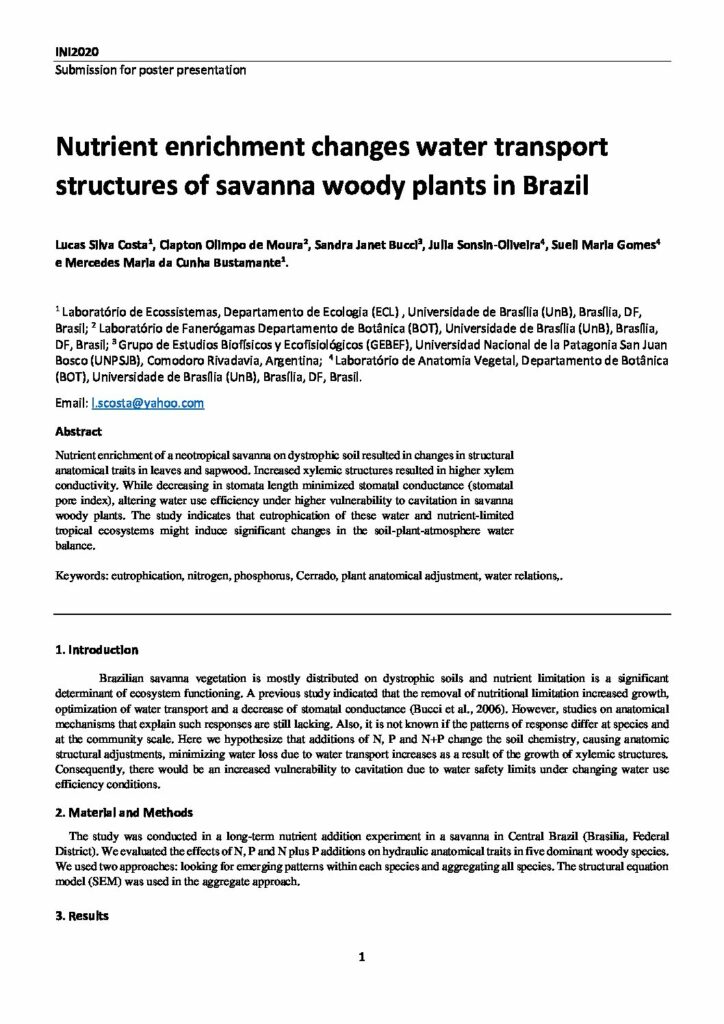Nutrient enrichment changes water transport structures of savanna woody plants in Brazil

Nutrient enrichment of a neotropical savanna on dystrophic soil resulted in changes in structural anatomical traits in leaves and sapwood. Increased xylemic structures resulted in higher xylem conductivity. While decreasing in stomata length minimized stomatal conductance (stomatal pore index), altering water use efficiency under higher vulnerability to cavitation in savanna woody plants. The study indicates that eutrophication of these water and nutrient-limited tropical ecosystems might induce significant changes in the soil-plant-atmosphere water balance.
Brazilian savanna vegetation is mostly distributed on dystrophic soils and nutrient limitation is a significant determinant of ecosystem functioning. A previous study indicated that the removal of nutritional limitation increased growth, optimization of water transport and a decrease of stomatal conductance (Bucci et al., 2006). However, studies on anatomical mechanisms that explain such responses are still lacking. Also, it is not known if the patterns of response differ at species and at the community scale. Here we hypothesize that additions of N, P and N+P change the soil chemistry, causing anatomic structural adjustments, minimizing water loss due to water transport increases as a result of the growth of xylemic structures. Consequently, there would be an increased vulnerability to cavitation due to water safety limits under changing water use efficiency conditions.
